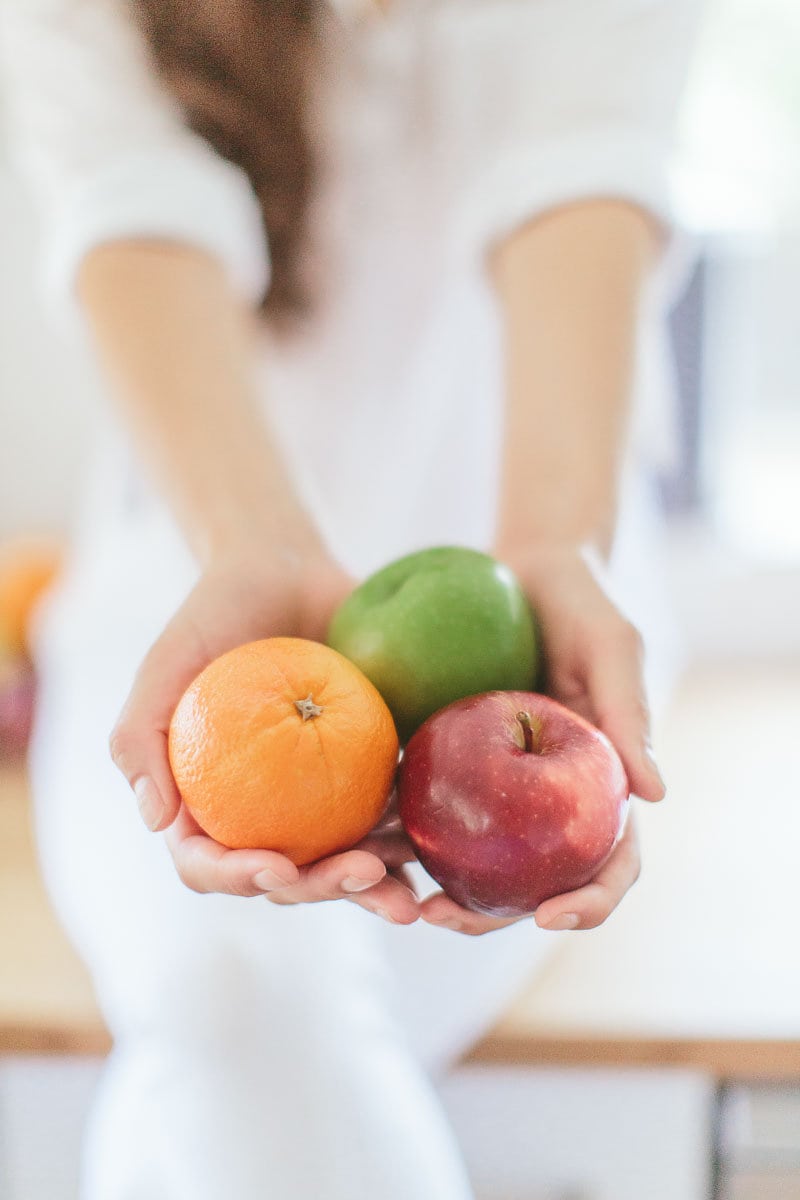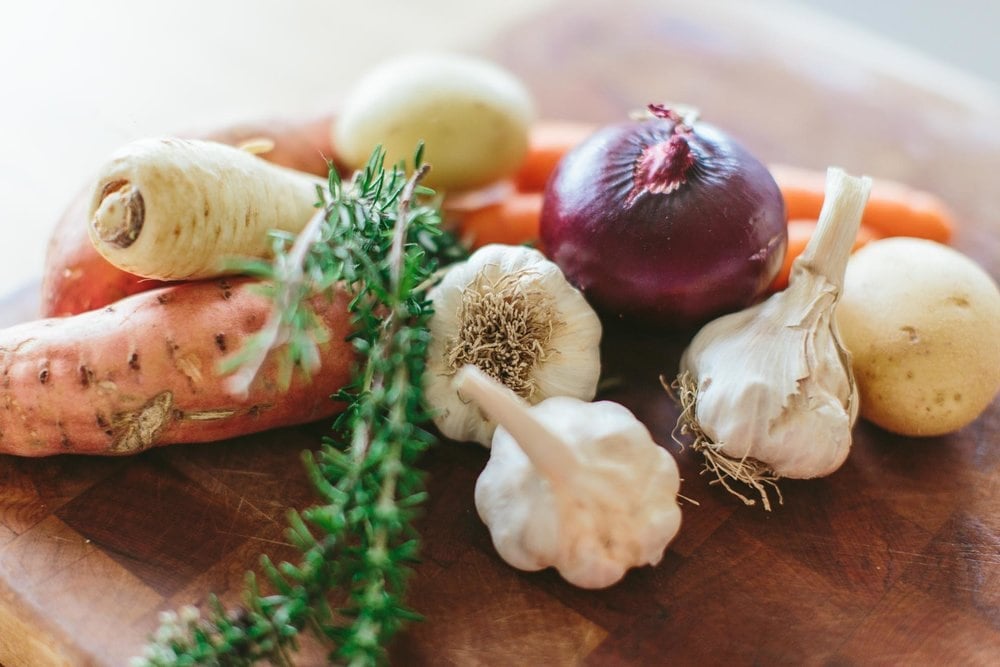Dietary fibre, aka the kingpin of gut regularity, may not present as the sexiest of topics but it is one of great importance to our health.

Fibre is an indigestible part of carbohydrates, found in plant foods like fruits, vegetable, rice, oats, legumes, seeds and nuts.
Being indigestible, it passes through most of our digestive tract, the long tube running from our mouth to butt, relatively unscathed. This resistance to digestion makes it hugely beneficial to our gut – and as gut health is a cornerstone of overall health, a happy gut helps equal a happy body.
Our Friend Fibre
-
It speeds up the passage of waste through our digestive tract. In a nutshell, this keeps us ‘regular’, preventing constipation.
-
It softens and bulks out our stools making them easier to pass (gross, but great).
-
It assists blood sugar regulation by slowing the absorption of sugars. This prevents blood sugars rising too quickly, aiding stable energy levels and weight management.
-
It acts a little like an inside scrubbing brush collecting waste, toxins and cholesterol, whilst on its journey through our digestive tract.
-
We feel fuller after we eat it which helps regulate our appetite.

…And One More Special Reason
Not only does fibre benefit humans, but also the trillions of bacteria that inhabit our gut.
The foods we eat are, first and foremost, to fuel us – but the little guys that live within our large intestines get hungry too.
Majority of what we eat doesn’t make it through our treacherous gut environment (thankfully, as this means our body is doing its job of breaking them down and extracting nutrients!), but fibre will sail through to the large intestines, where it will meet a gang of hungry microorganisms.
Here, our friendly gut bacteria will digest (aka ferment) the leftover grub, to use as their own fuel. Collectively, the foods these bacteria love are deemed prebiotics and include carbohydrates like fruits, such as banana and apples; veggies, like asparagus, garlic and leeks; legumes, like beans and peas; and oats.
By feeding the good bugs their favourite foods, they’ll help boost our health in return. Think of it like some kind of rent agreement, where we give them board and food, and in exchange they’ll do handy (biological) work for us, whether boosting our immunity, fighting against inflammation, or producing certain vitamins and short-chain healthy fatty acids (the latter helping to promote a strong gut barrier against harmful substances) (1) (2).
It’s a very ‘fruit’-ful relationship indeed (pun, of course, intended), where each party benefits.

Different Types of Fibre
There’s a few different types of fibre, namely soluble and insoluble fibre, with each having unique roles:
-
Insoluble fibre bulks up stool volume and encourages the movement of materials through our gut. This makes it handy for those who suffer from constipation or irregular bowel movements. Good sources include brown rice; the skins of fruits and veggies, like apples and potatoes; and corn.
-
Soluble fibre absorbs water in our gut to form a gel-like paste, making our waste contents a little easier to manage. It’s also great at slowing the release of sugars, which is important in blood sugar management, and its fat-binding abilities help reduce excess cholesterol. Good sources include oats, legumes (lentils, peas, beans), nuts, bananas and apples.
Most carbohydrate foods will contain both types of fibre – for example, the peel of many fruits are rich in insoluble fibre, while the flesh is often rich in soluble fibre. Natures cool right? It just gets it.
Therefore, we don’t need to be too concerned about eating foods richer in either type – as long as we consume a variety of plant-foods, especially whole sources, we should receive an adequate supply of each.
Five Ways To Get More Fibre Into Your Diet
Men should aim for 30g of fibre per day and women 25g of fibre per day. Here are some tips below that will help you reach your daily intake:
- Eat your 5+ a day of fruit and veggies fruits and veggies are a great source of fibre, as well as a plethora of other nutrients necessary for good health. Aim to keep up a good intake throughout the day – try a fruit smoothie or sautéed veggies with eggs for breakfast; a few handfuls of veggies at lunch and dinner; and fresh veggie sticks (hummus and pesto are yummy as dips!) or fresh fruit as a snack e.g. a few kiwifruits with a handful of nuts, apple slices spread with nut butter, or berries with yoghurt.
- Be team smoothie, not team juice when we juice our fruits and veggies we remove the precious fibre, and concentrate the sugar. Instead blend whole produce into a smoothie – it’s an easy and delicious way to reach the recommended 5+ servings of fruits and veggies per day.
- Eat more nuts and seeds sprinkle them on salads for crunch and texture, blend them into smoothies, snack on as a trail mix, or add to your muesli mix. Not only do they contain fibre, but protein, healthy fats, vitamins and minerals too.
- Include more plant-based meals in your weekly menu bump up your fibre intake by including a few more meat-free dishes into your week. Think lentil bolognese or bean chill!
- Leave the skin on whole produce, with the skins left on, is a good source of both soluble and insoluble fibre. Instead of peeling, just give your fruit and veggies a good scrub before eating them.

…A Few Last Tips
Fibre and water intake go hand-in-hand. Fibre absorbs water, which softens stools. Without enough water, we risk constipation, with bowel movements becoming dry and difficult to pass – kind of the exact opposite of what we’re after here! Another reason to drink your eight glasses of water a day.
Lastly, if you’re inspired to up your fibre intake, a gradual approach is best. Increasing the amount you’re eating too quickly might lead to bloating or cramping – our body needs a little time to adjust. Aim for small changes each week, like an extra piece of fruit at snack times.


No Comments